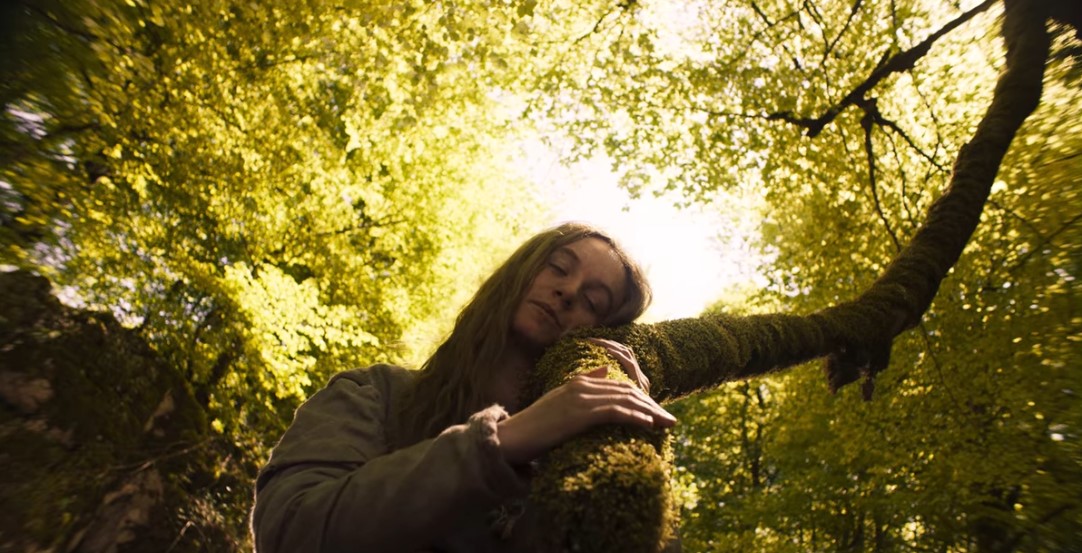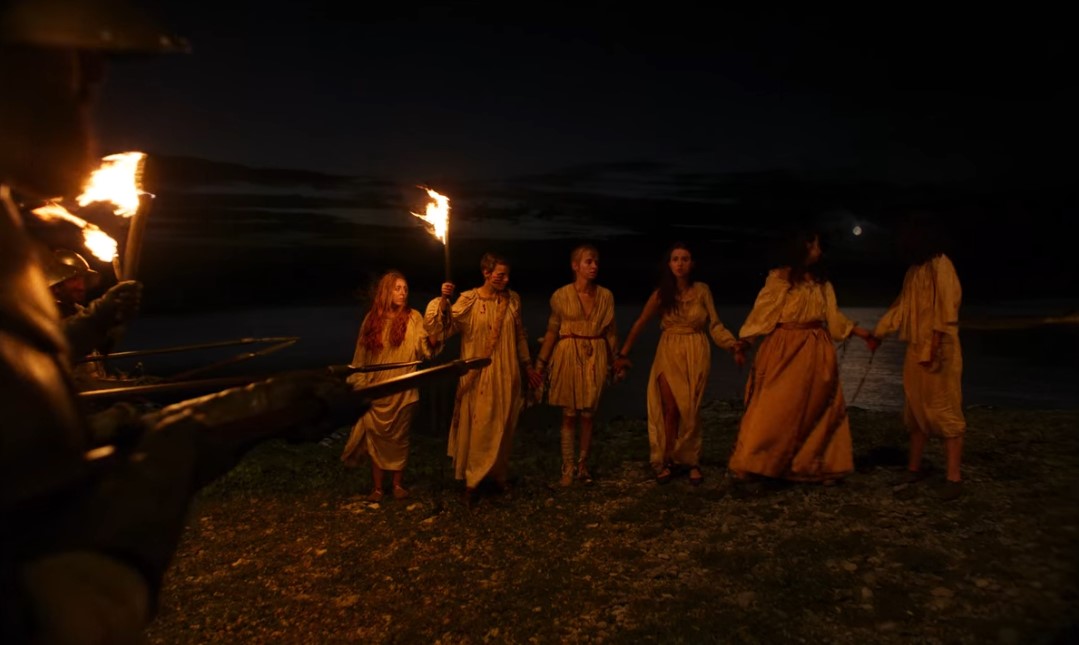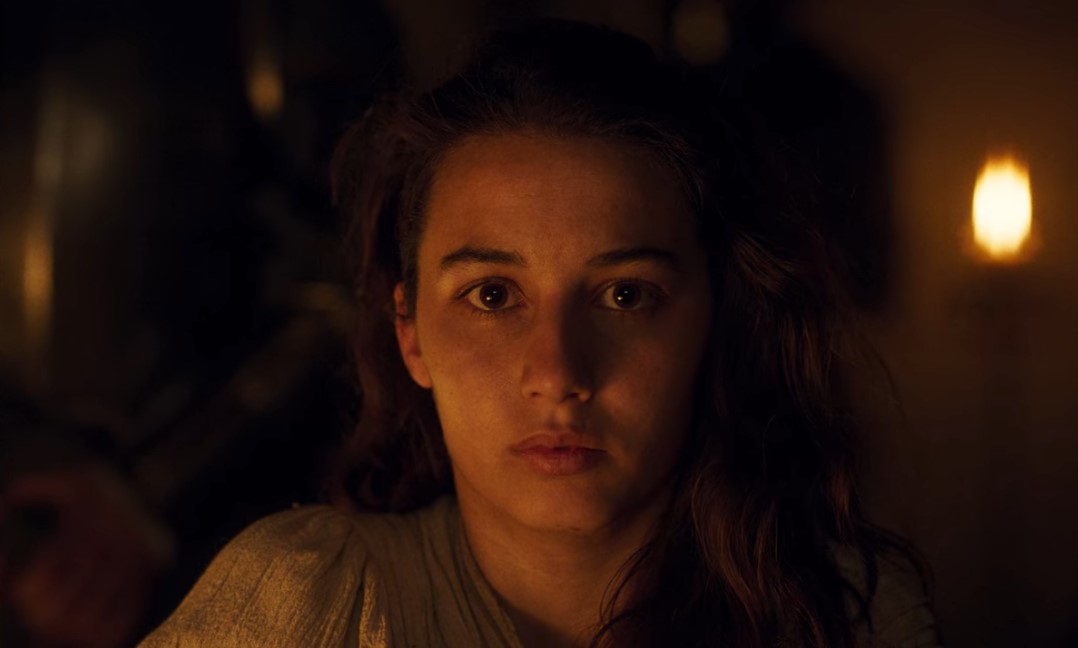Pablo Aguero’s ambitious, atmospheric Spanish drama ‘Coven of Sisters’ (Also known as ‘Akelarre’) transports the viewer to a dark chapter in the history of the Spanish Inquisition. An engrossing story brilliantly told with captivating photography and entrancing folk hymns, ‘Coven of Sisters’ is a slow-burning period film that will leave an indelible mark in the mind of its audience. Set in the early days of the seventeenth century, the film takes us to the northern Spanish region of Basque, where a witch trial is underway as six girls fall prey to the superstitious schemes of the orthodox monarchy of Felipe III.
Attentive to little structural details, surprisingly fresh, and highly symbolic in its depiction of dogmas that are imposed upon femininity, the film is more about the liberation of life than the imprisonment of it. The film ends on an ambiguous note, leaving a few strands of the narrative to viewers’ speculations. In the process, the film manages to blend the real and the supernatural in a way that only reinstates the belief in folk tales and witchcraft, rather than dismissing them as figments of imagination. If you are wondering how the narrative of the film reaches its denouement, we shall try to break down the narrative developments for you. SPOILERS AHEAD.
Coven of Sisters Plot Synopsis
The narrative of ‘Coven of Sisters’ begins with two men from the liturgy conversing amongst themselves. While one expresses his agony and intrigue regarding the “Witches’ Sabbath” – where, he claims, witches summon the devil under a full moon – the other states his doubt about the very existence of the satanic ritual. We get to know that these two men are Rostegui (Alex Brendemuhl) and Consejero (Daniel Fanego), judges ordained by the King to cleanse the region of witches. Their job is to make the witches confess to their heinous crime of performing pagan rituals (apparently to bewitch unsuspecting, innocent Catholics), after which they burn them at the stake.

They reach the northern province of Basque, a region characterized by ancient beliefs and a mixture of cultures due to its proximity to the sea. Upon reaching, the judges take shelter in the local Catholic Church of Padre Cristobal. Five young women, Ana Ibarguren, Maria Ibarguren, Maider Aguirre, Olaia Isasi, and Oneka Arbizu, and a teenager named Katalin, are arrested from their house by the cliff by royal guards. They find themselves imprisoned based on suspicion about them being witches, and while the girls are vaguely amused by the claim of the divinity-employed judges, they decide to play along.
They are manipulated and tortured into confessing that they have performed the witches’ Sabbath, and Ana, in an attempt to save her sisters, tries to come up with a convincing story to deliver. Rostegui is eager to believe the story as he is attracted by the natural beauty of Ana, although he attributes the attraction to Ana’s bewitching skills. The judges are intrigued to see the actual Sabbath, of which they have only heard rumors until now, and a cunning Ana lures them into her perfectly woven plot.
Coven of Sisters Ending: Are the Sisters Actual Witches?
If you are expecting to see witches waving their wands and riding their broomsticks, this film will only disappoint you. It has been maintained in the story that Ana and her sisters are wrongfully accused of being witches, and they don’t even know why they are held captive. While Katalin’s imaginative mind almost believes in witchcraft, the rest of the girls ridicule such beliefs and provoke the guards. Even when some of them are abused and assaulted, they stick together and remain hopeful till the very end. They manage to keep the judges on the hook with the allure of the forbidden Sabbath of the witches, and they enact the whole ritual in front of them.

While the ritual seems perfectly convincing, to which Judge Rostegui would attest his faith, it is most probably a fabrication. The hymns that the girls sing in unison seem to be more rooted in the practices of paganism than the “blasphemous” rituals of witchcraft. It is more likely that the witches are an invention of the orthodox Christian Inquisition, which seeks to eradicate the rich repository of heterogeneous cultures that inhabit provincial Spain. While witches probably do not exist, an imposing patriarchal divinity does, more so in the context of early seventeenth-century Spain. And when judge Consejero suspects that the local dialect is satanic, we know that he is stretching it too far.
Do The Girls Fly Away in the End?
In the final scene, we see the sisters cornered by guards in an attempt to escape. Chained with each other, they stand by a cliff on the seashore. This is the hilltop that has been depicted previously in the film on several different occasions, and the film takes us back there for a fitting conclusion. In a previous scene, Ana tells Rostegui of her ability to fly, which he believes due to his predisposed conviction regarding witches.

Coming back to the last scene, we see Ana and the sisters preparing to jump off the cliff into the sea, guided by a cue about the full moon tide. The camera moves towards Rostegui for a moment, who exclaims that the girls have flown. We see the spark in his delusional eyes, and the camera moves back to show an empty canvas of a cliff, with a sole torch burning on the ground. While it is likely that they have jumped off to sea, the director decides to keep the narrative open-ended, toying with audiences’ imagination.
On Whose Side is Rostegui?
The ambiguity of the film is articulately embodied within the character of Rostegui, the judge who has been referred to as “Lucifer” on multiple occasions. The skeptic and ornate Judge Rostegui tries to extract a confession from Ana through his oratory skills but becomes obsessed with the character of Ana. Rational and inquisitive, he seeks to communicate with the feminine in Ana and believes her well-crafted story of performing the Witches’ Sabbath.
Ana leads him on to the actual act of the ritual, where he joins the witches in a moment of frenzy. Seemingly smitten by the beauteous Ana and speculatively in league with the devil, the character of Rostegui is more of an anti-hero than a blackened villain. His character is a convincing portrayal of a man who tries to break away from the repressive regime of orthodoxy by addressing primitive carnal desires but is constrained by his authoritative position.
Read More: Where Was Coven of Sisters Filmed?


You must be logged in to post a comment.